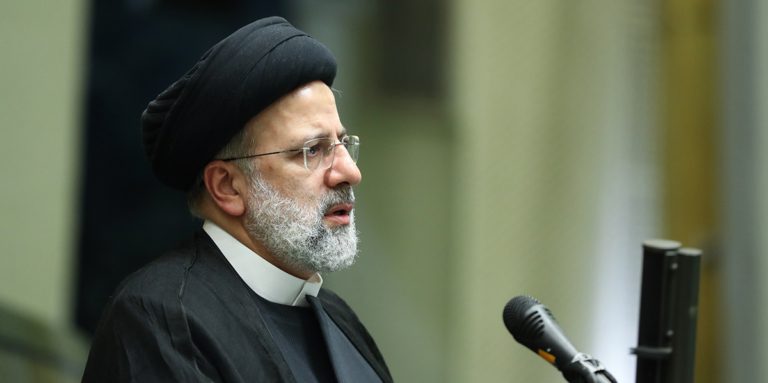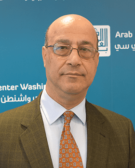
Iranian President Ebrahim Raisi’s death comes at a particularly precarious time for the Islamic Republic. While important, considering the monumental news, Supreme Leader Ali Khamenei’s assurances that everything is under control cannot ameliorate the feelings of vulnerability, confusion, and uncertainty pervading Iranian society. Neither will the seemingly smooth and constitutionally mandated transition of power to a new president address how Iran will solve a complicated set of domestic, regional, and international problems soon. Indeed, as the Islamic Republic organizes the post-Raisi transition and elects or appoints its permanent constitutional officers, the country needs to address its challenges speedily and effectively or face the specter of instability for years to come.
One thing is sure, however: Iran will continue to execute what Khamenei decides is in the good interest of the country. Iran now is the transitional period of 50 days—which its constitution stipulates must be followed by a new presidential election—and after that will maintain the conservative domestic policies Khamenei approves and the activist foreign policy he supports. The clerical regime will survive ideologically and in practice and its hardliners are likely to increase their control. Iranian support of proxy forces around the region, in Iraq, Lebanon, Palestine, Syria, and Yemen is likely to continue, and not the least because Tehran needs to have instruments of pressure to both defend itself and to influence events.
Of utmost importance domestically is getting the Iranian economy on track, and in the process lessening the economic control of the Islamic Revolutionary Guard Corps and fighting corruption and malfeasance. Just as important is effectively dealing with the dangerous degree of public disillusionment with the status quo in Tehran. Only a small percentage of voters (41 percent; 26 percent in Tehran) cast their ballots in the latest parliamentary elections, an act often, and rightly, used to gauge the legitimacy in the public’s eye of elected institutions. Similarly, and following the repeated and brutal crackdowns on demonstrations—at least since the disputed elections of 2009 and through the protests following the killing of Mahsa Amini in 2022—Iranians are concerned about the legacy of repression that the late president condoned and encouraged. Without a new leadership that takes these essential concerns into account, Iran will continue to suffer from endemic instability feeding on failed governance.
Then there is the other pesky issue of succession to the office of Supreme Leader when Khamenei passes away, the timing of which no one can predict. But the choice of the new leader will weigh heavily on the country, domestically and externally, and will determine its political trajectory decades into the future. As Raisi was considered to be one of the contenders for the office, his departure must bring forth new potential candidates whose current credentials as well as potential future thinking impact the entire process.
Regionally, Raisi’s death will not seriously impact Iran’s new push to normalize relations with its Gulf Arab neighbors, put on a steady course with the China-organized rapprochement with Saudi Arabia in March 2023. Neither will Iran’s relationship with its friends and militias in Arab countries wane. Iran has long considered them assets in its foreign policy and essential instruments for influence and defense, however much they have tried to present themselves as independent of Tehran. Neither is Iran’s foreign policy toward Israel likely to change from what Iran’s regional allies see as a competition of interests, ideology, and strategic reach. To be sure, any new leadership in Tehran will go out of its way to prove its legitimacy by announcing its commitment to Palestine and its continued antagonism to Israel, but likely only by sharpening its rhetoric against the Zionist state.
Finally, given the uncompromising anti-Iran stance of Israeli Prime Minister Benjamin Netanyahu and the seeming US endorsement of Israel’s rhetoric, the Islamic Republic is likely to pursue a more elaborate plan for developing its nuclear energy sector. Raisi the hardliner was never fully on board with former President Hassan Rouhani’s pursuit of and success in signing the Joint Comprehensive Plan of Action with the United States. His short tenure witnessed a concerted effort to enrich uranium beyond levels acceptable to Washington. His successor, again in an attempt to burnish his image among the dominant hardline faction in Iranian politics, is likely to pursue a policy on nuclear development just as aggressive, if not more so, than that of the departed president.
Raisi’s departure from the scene is obviously an unwelcome development for Iran’s hardline establishment and for Iranians looking for domestic political stability. But it also is not going to produce a sea change in Iranian domestic, regional, and international policies. Under Khamenei and probably also under his immediate successor, Iran will remain a conservative state with a clerical regime bent on burnishing its governing ideology and practice domestically and expanding its influence and reach regionally. Raisi’s successor will be another soldier in the fight for this combination of internal, regional, and international goals.
The views expressed in this publication are the author’s own and do not necessarily reflect the position of Arab Center Washington DC, its staff, or its Board of Directors.
Featured image credit: IRNA

